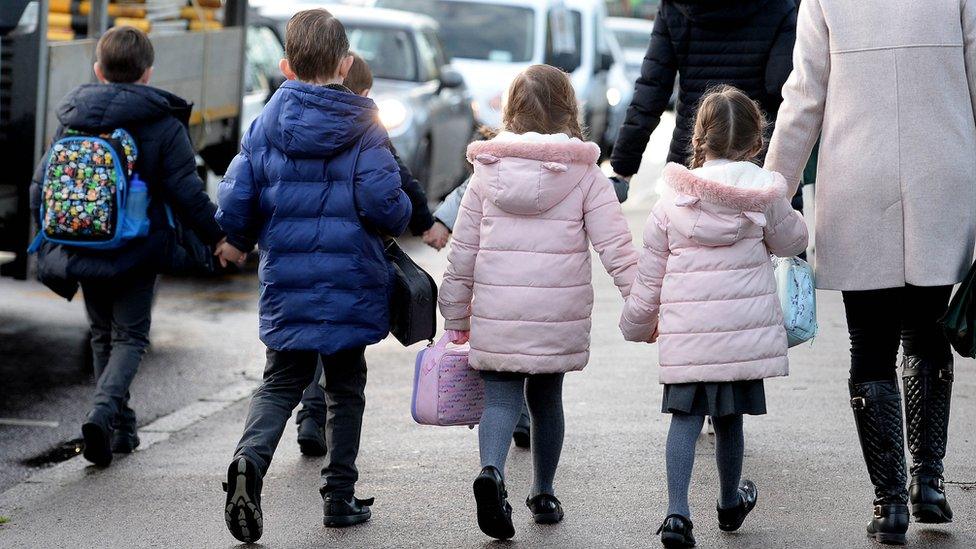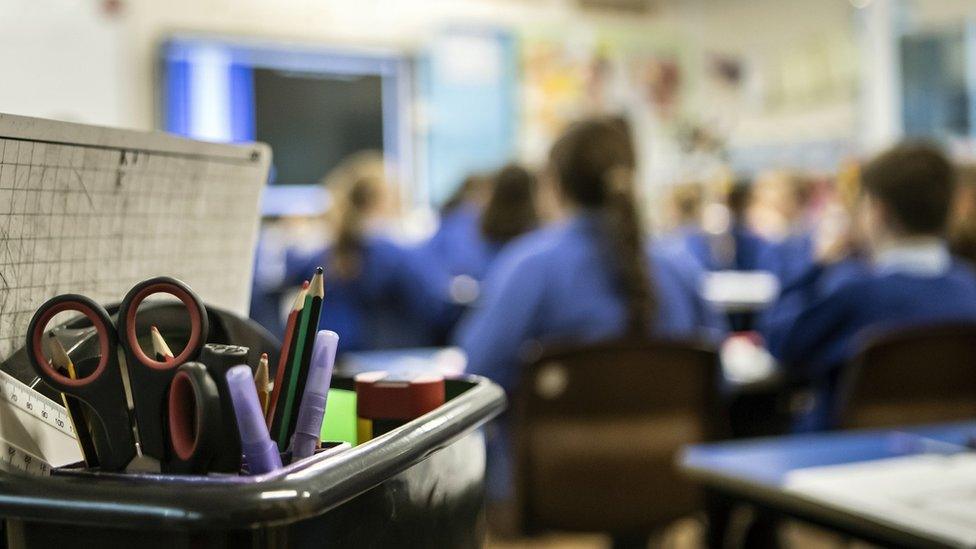What is the Scottish child payment and can I get it?
- Published

Scottish Child Payment was first introduced in 2021, for low-income families with children under six
The Scottish Child Payment has increased to £25 a week, having previously been worth £20.
Almost half of all children could benefit from the payment - which is only available to peope living in Scotland - after it was extended to include anyone under 16.
About 407,000 children are in families eligible for the £25 weekly benefit.
Scottish Child Payment will cost £219m in total for the 2022-23 financial year, with the new changes costing £15m.
It could cost up to £474m yearly in future years.
What is Scottish Child Payment?
Scottish Child Payment was first introduced on 15 February 2021, with the intention of delivering a benefit for low-income families with children under six.
It is administered by Social Security Scotland through an application-based process, and is paid on a four-weekly basis.
Through the Child Poverty (Scotland) Act 2017, the Scottish government has pledged to reduce relative child poverty to less than 18% by 2023-24, before dropping to less than 10% by the end of the decade.
The Scottish Child Payment has been implemented using powers devolved through the Scotland Act 2016, external, which gave the Scottish Parliament responsibility for £2.8bn of social security expenditure.
This includes the power to top-up reserved benefits for people who require additional financial assistance.
The Scottish government's tackling child poverty delivery plan recognises that no action in isolation can make the required changes
Measures around work, earnings and the cost of living, on top of Best Start Grants and Best Start Foods benefits are also intended to tackle child poverty.
Who is eligible?
In the financial year 2022-23, the Scottish government estimates that 41% of children under six are eligible for the payment and 48% of children over six.
Scottish Child Payment is available to families who live in Scotland, get certain benefits or payments, and contains the main carer for a child under the age of 16.
The parents and guardians can apply for the benefit whether or not they work, and are eligible if they receive Universal Credit, Child Tax Credit, Working Tax Credit and income-based Jobseeker's Allowance (JSA).

About 407,000 children are in families eligible for the £25 weekly benefit
Social Security Scotland also accept claims if one of the adults receives Pension Credit, Income Support and, income-related Employment and Support Allowance (ESA).
Child benefit on its own is not an accepted benefit for Scottish Child Payment.
Those waiting for qualifying benefits to be approved can still apply.
People receiving a benefit from a European Economic Area (EEA) country or Switzerland may be eligible for Scottish Child Payment and should call Social Security Scotland, external for more information.
How can I apply?
The application for Scottish Child Payment can be completed online, by phone or by post.
You do not need to apply again if you are already receiving the benefit.
To apply online, external, applicants need to provide their national insurance number, bank details and personal details about themselves and their families.
The Scottish government website says the form usually takes around 10 to 20 minutes to complete but that it's possible to save the form and come back later if required.
The website crashed on Monday morning, due to "massive demand".
If applicants want to apply over the phone, they should call Social Security Scotland, external which is open Monday to Friday, 08:00 to 18:00.
British Sign Language (BSL) users, can use the contactSCOTLAND app to contact Social Security Scotland by video relay.
To apply for Scottish Child Payment by post, external, applicants can fill in a paper form and send it via the Royal Mail.
What will the uptake be like?
The Scottish government estimates that in the financial year 2022-23, 41% of children under six are eligible for the payment and 48% of children over six.
That equates to roughly 407,000 of children in total.
Of that number, however, it is estimated that only 85% of children under six and 71% of children eligible over six will have caregivers who take up the payment.
This is expected to rise to 85% and 80% respectively and stay at a steady rate for the next five financial years.